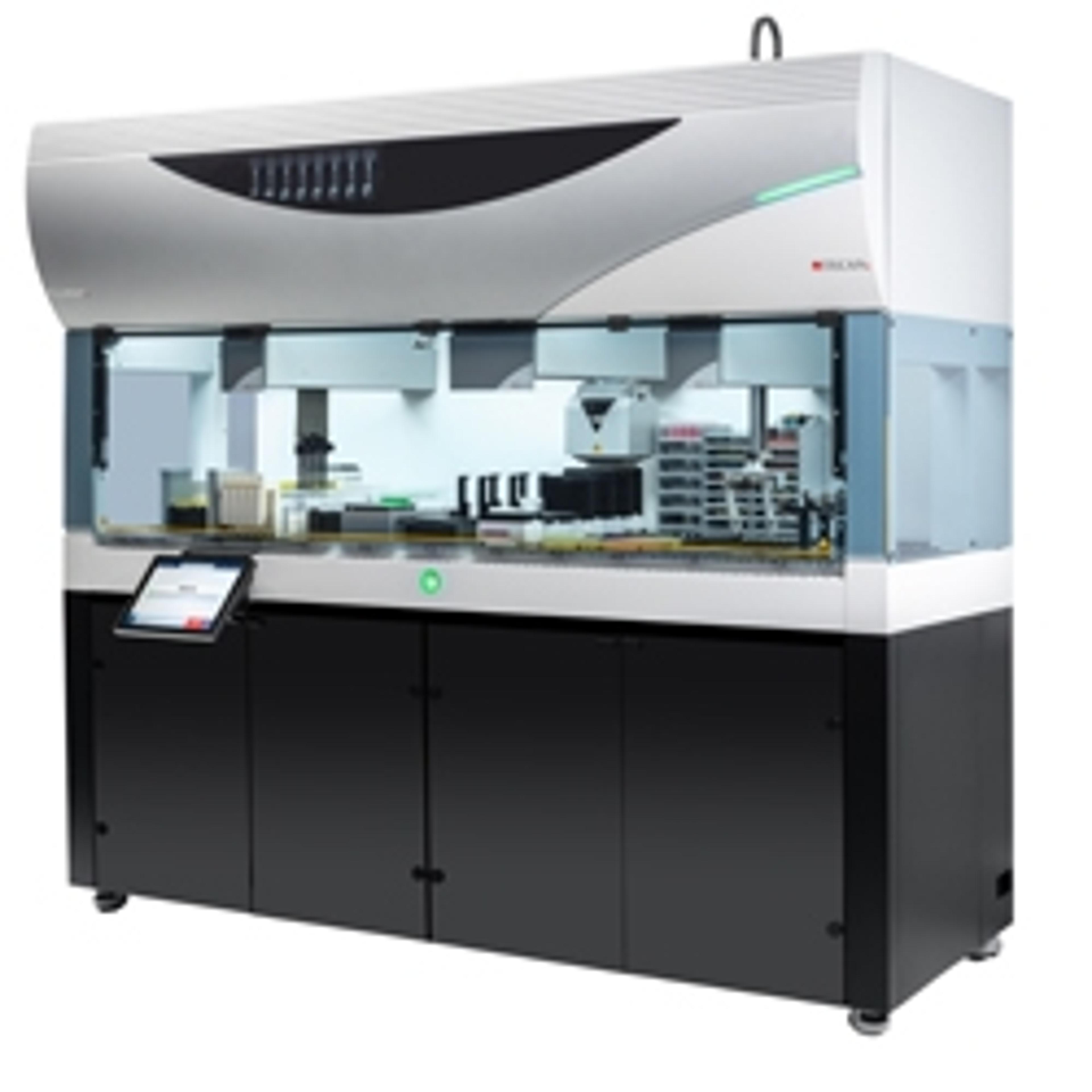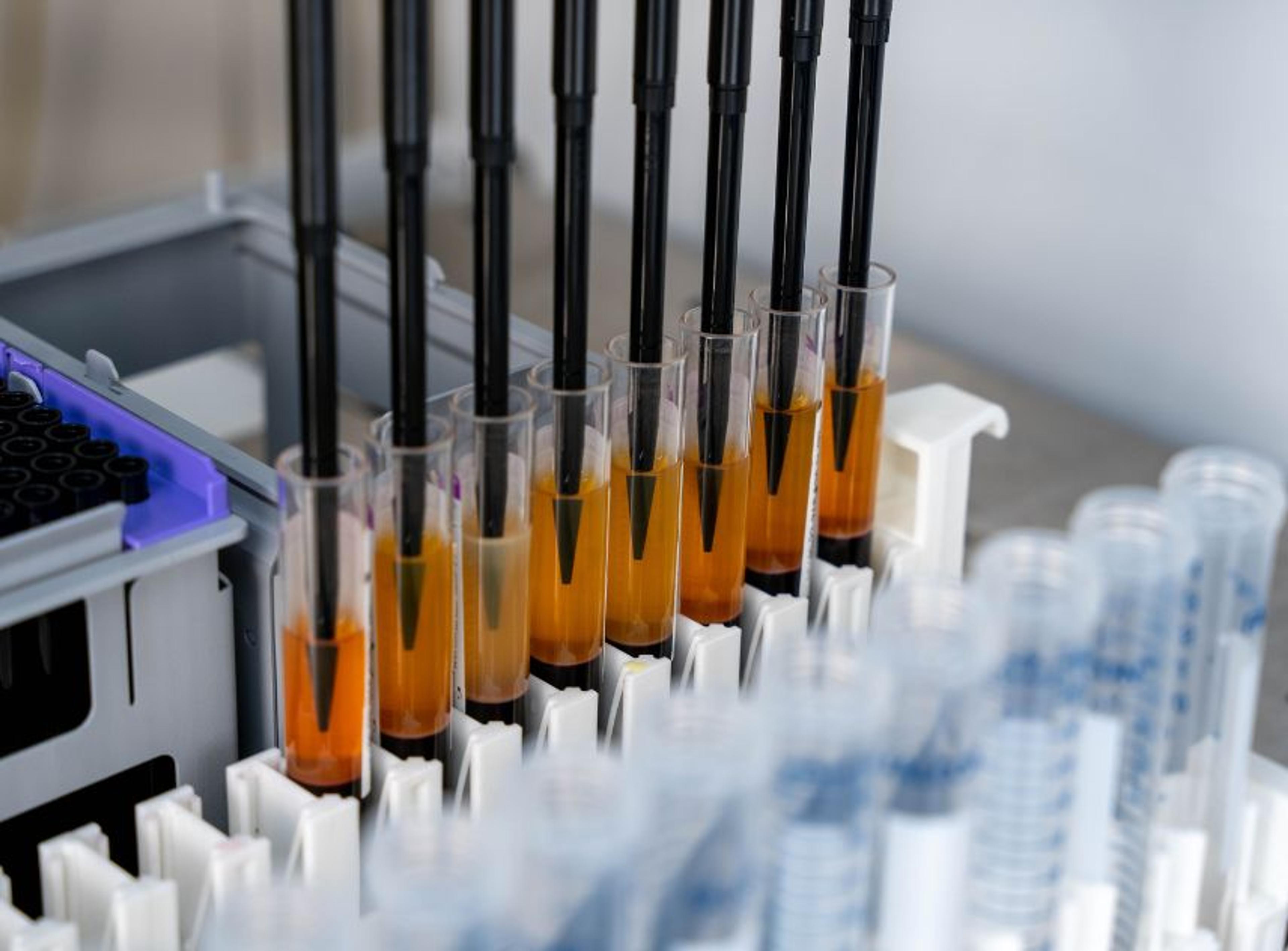Transforming personalized cancer care with liquid biopsies and automation
Discover how automation enhances accuracy and efficiency of liquid biopsy workflows, paving the way for advancements in personalized medicine and improved patient care
17 Mar 2025Liquid biopsy is a diagnostic technique that identifies cancer and other diseases by analyzing biomarkers, including circulating tumor cells (CTCs) and cell-free DNA (cfDNA), found in bodily fluids such as blood. As a companion to traditional tissue biopsies, liquid biopsy offers a minimally invasive approach with potential for early detection, disease monitoring, and treatment guidance. Automation in liquid biopsy streamlines workflows by enhancing accuracy and standardizing processes, essential for ensuring consistency in clinical applications as demand for liquid biopsy applications continues to grow.

Prof. Umberto Malapelle, Chair of the Predictive Molecular Pathology Laboratory at the Department of Public Health, University Federico II of Naples
We explore the transformative impact of automation on liquid biopsy workflows with Prof. Umberto Malapelle, Chair of the Predictive Molecular Pathology Laboratory at the Department of Public Health, University Federico II of Naples, and experts from Tecan. In this article, you will hear their insights on how automated solutions can significantly enhance efficiency, accuracy, and reproducibility in diagnostic processes, which are crucial for advancing personalized medicine and improving patient outcomes.
By streamlining the transition from research to routine clinical practice, find out how automation enables that liquid biopsy becomes a more standardized and reliable tool for patient care.
Transforming cancer care with liquid biopsy
Next-generation technologies for predictive diagnostics in cancer, such as next-generation sequencing (NGS) and liquid biopsy, are advancing cancer care by enabling faster and more precise analyses of genetic mutations and biomarkers, leading to earlier diagnoses. These tools also help identify specific molecular changes in tumor samples or circulating DNA, enabling clinicians to more accurately tailor treatments like immunotherapies to each patient’s unique genetic profile.
Speaking on this topic, Malapelle states, “in tailoring next-generation technologies for predictive diagnostics in solid tumors, with a special focus on NGS and liquid biopsy, we can study the mutational landscape of our patients to define the treatment decision process using targeted treatments and immunotherapy.”
When discussing the transformative role of liquid biopsy in modern cancer diagnostics and treatment monitoring, Malapelle explains, “liquid biopsy is a key tool in the predictive molecular pathology landscape because it offers a dynamic source of information to study the mutational and phenotypic assets of patients, particularly in solid tumors.” He adds, “liquid biopsy is transforming the precision oncology world. Recent advancements show its potential not only to predict treatment responses but also to monitor tumor evolution, track minimal residual disease, and intercept cancer in various settings.”
He also noted a major milestone, “only recently was the first screening test based on liquid biopsy approved for colorectal cancer.” He is currently engaged in multiple projects that leverage liquid biopsy to track tumor evolution through the bloodstream. “This gives us the opportunity to better tailor treatment, diagnostic procedures, and overall clinical management, redefining the treatment decision-making process and optimizing therapeutic options for our patients,” he explains.
Liquid biopsy is a key tool in the predictive molecular pathology landscape because it offers a dynamic source of information to study the mutational and phenotypic assets of patients, particularly in solid tumors.
Prof. Umberto Malapelle, Department of Public Health, University Federico II of Naples
Standardized automation for clinical research success
While the promise of liquid biopsy is clear, its widespread adoption faces challenges. Often circulating tumor DNA (ctDNA) or cfDNA is only present in small amounts and may be undetectable, meaning standardization of assays is required to ensure reproducibility1.
“We need to improve the standardization of liquid biopsy workflow,” explains Malapelle. “We can do this by using automation, starting with the pre-analytical management of blood and other bodily fluids, from the collection of biomaterials to the extraction of nucleic acids and other bio-analytes.” The optimal workflow should be structured to maintain the sample's integrity from the moment of blood draw through to downstream preparation, ensuring it is fully prepared for analysis.

(Left) Ralf Griebel, Head of the Partnering Business Division at Tecan, (Right) Mukta Acharya, Head of the Life Sciences Business Division at Tecan
Mukta Acharya emphasizes Tecan’s role in overcoming these challenges, “Our aim is to accelerate the development, validation and clinical adoption of liquid biopsy protocols, ensuring improved productivity, high accuracy and reproducibility and optimized cost per sample.’’ She highlights the patented Phase Separator™ technology, integral to the Fluent® Automation Workstation, which is designed to ensure precise liquid-liquid phase separation. It achieves a near-zero error rate compared to the previous method’s 15%2, and operates at up to twice the speed of camera-based systems, seamlessly integrating with Tecan’s existing solutions.
Ralf Griebel builds on Acharya’s insights, saying, “By having in-depth regulatory knowledge, that covers FDA, IVDR, CLIA, and other regulations, we are able to support customers in navigating their compliance challenges. Furthermore, through maximizing uptime, we can help to optimize the total costs incurred over an instrument’s lifetime.’’ He emphasizes that integrating Tecan’s liquid biopsy solutions into clinical settings creates a standardized framework that advances cancer care. “By automating complex workflows, Tecan enables robust, and reproducible sample processing, facilitating the transition from research into routine clinical practice.”
Liquid biopsy as an integrative tool
For researchers and clinicians looking to integrate liquid biopsy technologies into their work, Malapelle provides valuable insights. “Liquid biopsy is not a substitution for other types of analysis carried out in our lab but is an integrative source of information. For example, tissue-based biopsies provide a view of the morphological aspects of tumors, while liquid biopsies offer dynamic information on tumor evolution,” he explains.
He emphasizes that integration is key, “to successfully incorporate liquid biopsy in a lab, we must thoroughly assess the lab's capabilities. The first phase involves bio-fluid management. We need an infrastructure to collect blood and other bodily fluids, manage these fluids, and prepare them for nucleic acid extraction—whether for cfDNA or CTCs.” Consequently, automation plays a crucial role in the pre-analytical management of liquid biopsy samples, ensuring high-quality samples are delivered to analytical platforms. This process generates comprehensive information from molecular and morphological analyses.
The key strategy is to integrate all this data to give oncologists a complete view of the complex tumor landscape they are treating. With this holistic perspective, oncologists can make informed decisions about the best treatment regimens, ultimately enhancing the precision of cancer care. Building on Malapelle's insights, Griebel adds, “at Tecan, we see the potential of liquid biopsy in offering a more precise and personalized approach to cancer care. This is why we have worked so closely with our customers and liquid biopsy experts to address their specific challenges and provide standards that accelerate their workflows through automation.”
Liquid biopsy is not a substitution for other types of analysis carried out in our lab but is an integrative source of information.
Prof. Umberto Malapelle, Department of Public Health, University Federico II of Naples
From research to clinical implementation
Malapelle states, “the future of liquid biopsy is limited only by our imagination because it provides a wealth of actionable and evolving data about patients and their tumors.” He emphasizes the need to decode this complexity through liquid biopsy, foreseeing an integration of diverse technologies in the field.
Malapelle notes that we are in an exciting era where technology allows us to gather extensive biological information. The main challenge is effectively integrating this data. Collaboration with bioinformaticians will be essential to develop straightforward methods for presenting this information through standardized tools and procedures, ensuring consistency across labs. Addressing these challenges is vital for obtaining IVDR approval and transitioning from laboratory-developed tests (LDTs) to IVDR-approved strategies for liquid biopsy.
“Tecan is committed to driving these innovations forward,” Acharya concludes. “Our goal is to provide comprehensive solutions that empower laboratories to accelerate research and integrate liquid biopsy seamlessly into clinical practice. By offering advanced automation, deep applications expertise, and regulatory knowledge, we help ensure that liquid biopsy can deliver on its promise of revolutionizing cancer diagnostics and treatment, ultimately improving patient outcomes.”
References
1. Nikanjam M., Kato S., Kurzrock R. (2022). Liquid biopsy: current technology and clinical applications. J Hematol Oncol 15;131 doi:10.1186/s13045-022-01351-y
2. Confirmed in over 130,000 tests over six months. Results may vary based on the liquids and centrifugation conditions.


